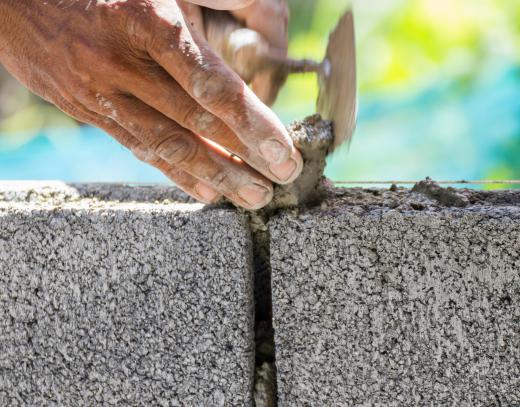A sleeper wall can be one of two types of walls. One type of sleeper wall is a short, load bearing wall used to support a structure so as to keep the beams or joists that form the base for its floor off the ground. These beams are also known as sleepers, This is done to reduce potential absorption of ground moisture. A second type of sleeper wall is a wall often used in landscaping as a retaining wall. A sleeper retaining wall is so called because of its use of sleepers stacked atop one another to hold back a volume of earth.
Structures without basements are often supported by sleeper walls. These walls can form part of the building's foundation and are usually no more than 1 or 2 feet (30 to 60 cm) high. Sleeper walls of this type are usually constructed of brick or concrete blocks and are often designed in such a way as to allow air circulation, which helps reduce moisture in the space under the structure.

These walls were much more common in previous centuries than they are in modern buildings, but in areas of the world where buildings and conditions are still relatively primitive or anywhere wooden structures are built without basements, these walls are still fairly common. Sleeper walls help keep the main structure of a building dry and help protect the wood from rot. Granaries and other buildings designed for storage of goods often had these types of walls as well.
Retaining walls built with a system of vertical posts that brace a series of horizontal beams stacked atop one another are also called sleeper walls. The horizontal beams, also called sleepers, are attached to the vertical posts, which are often sunk deep into the ground for stability. Each beam is sometimes attached to the beam below it for additional strength. Walls of this type can be very strong and capable of holding back large amounts of earth. These walls are common in landscaping but often serve a useful function as well as a cosmetic one.
A concrete sleeper wall is a sleeper retaining wall constructed out of preformed concrete slabs or beams instead of wooden sleepers. The posts used to brace and support the sleepers are usually concrete as well. These concrete sleeper walls can have elements poured in a number of decorative molds for the sake of appearance. These walls are popular with landscapers and builders because the concrete slabs or sleepers are designed to lock together, eliminating the need for mortar or other fastening mechanisms.
